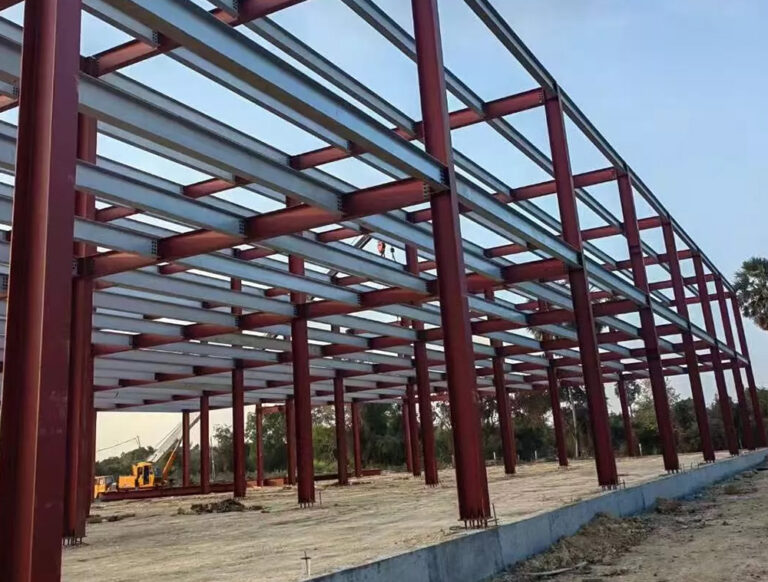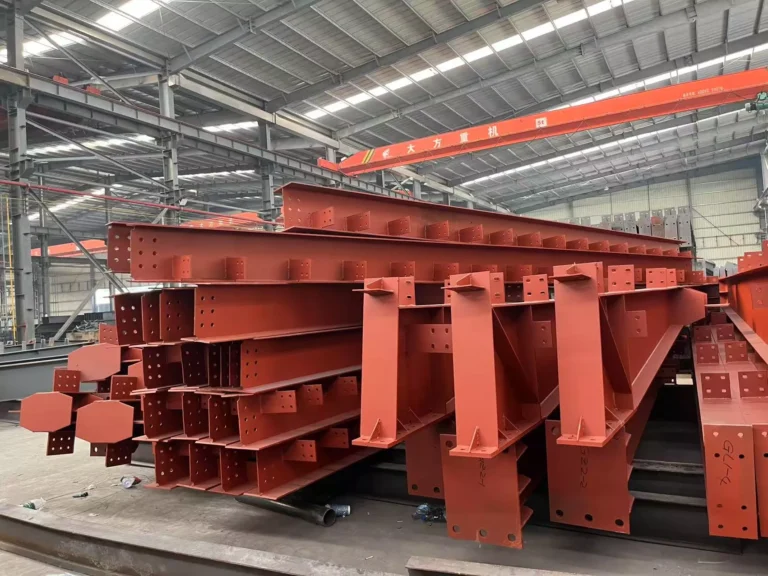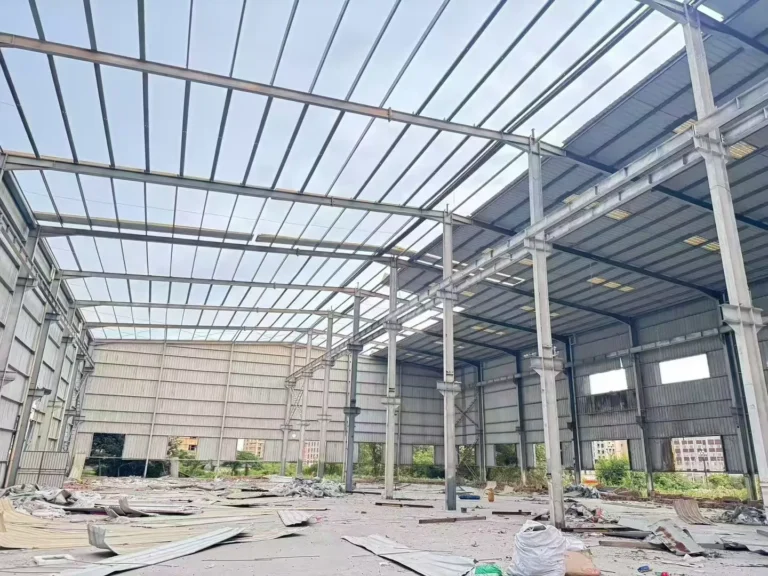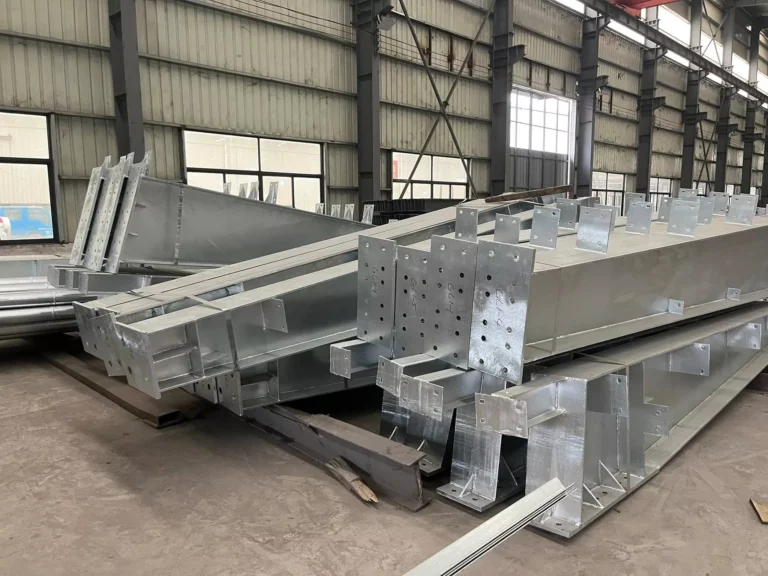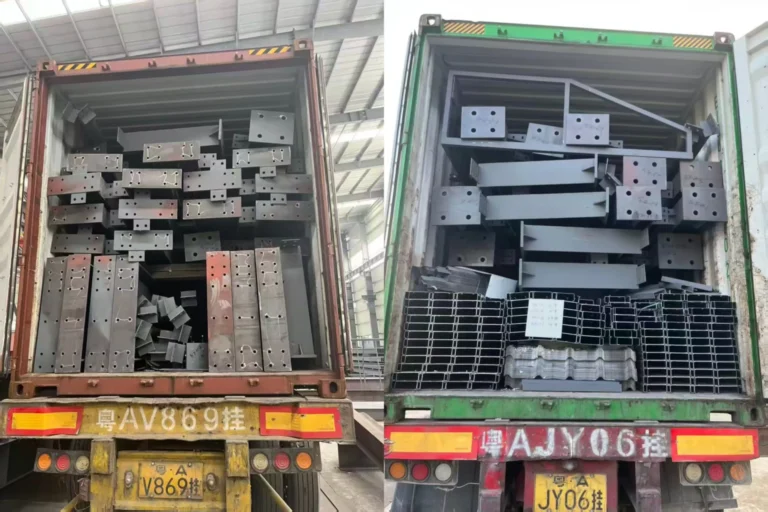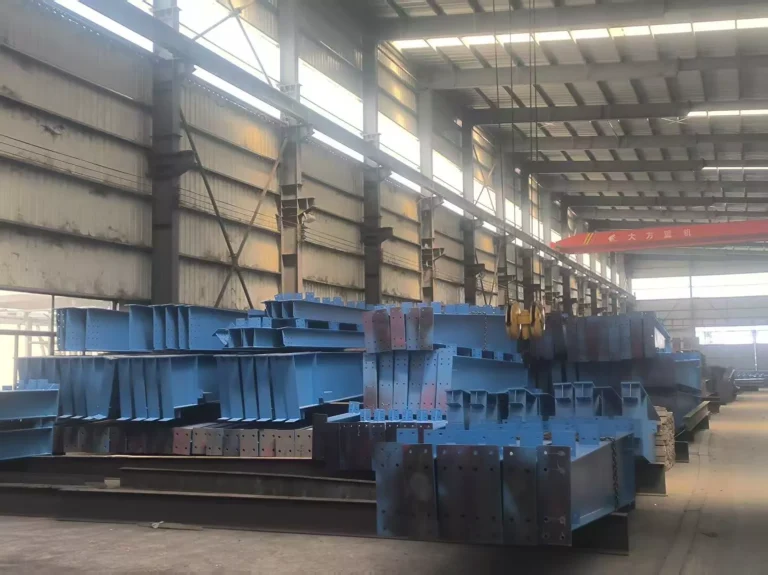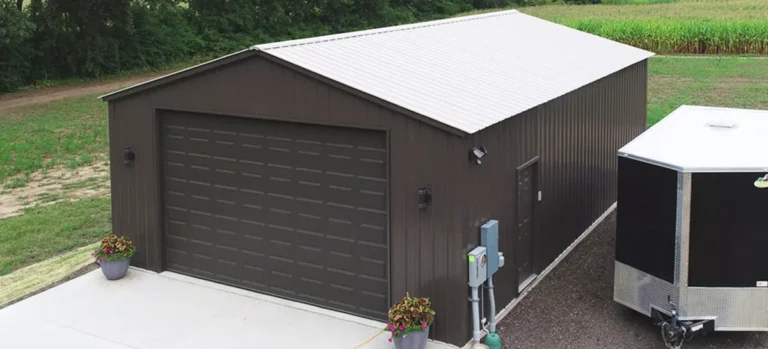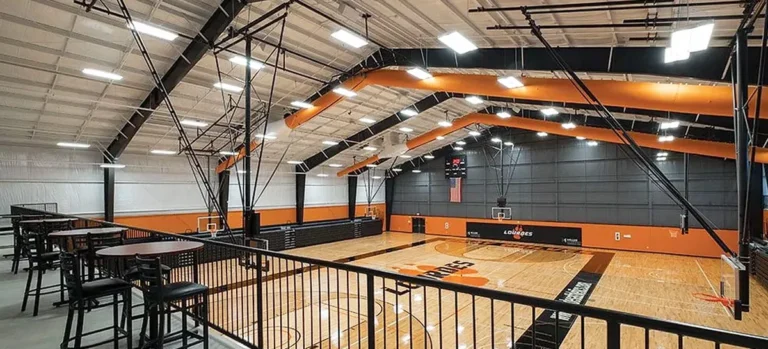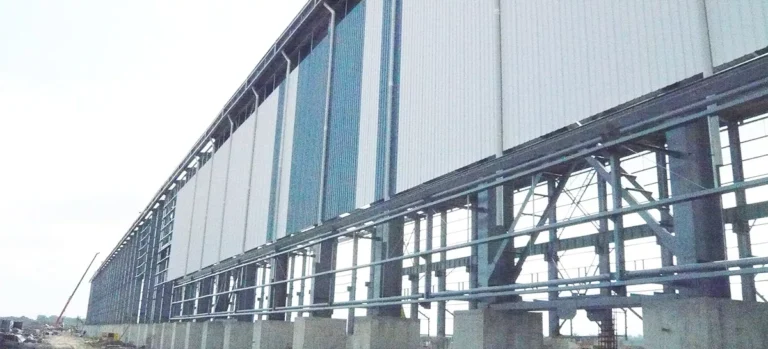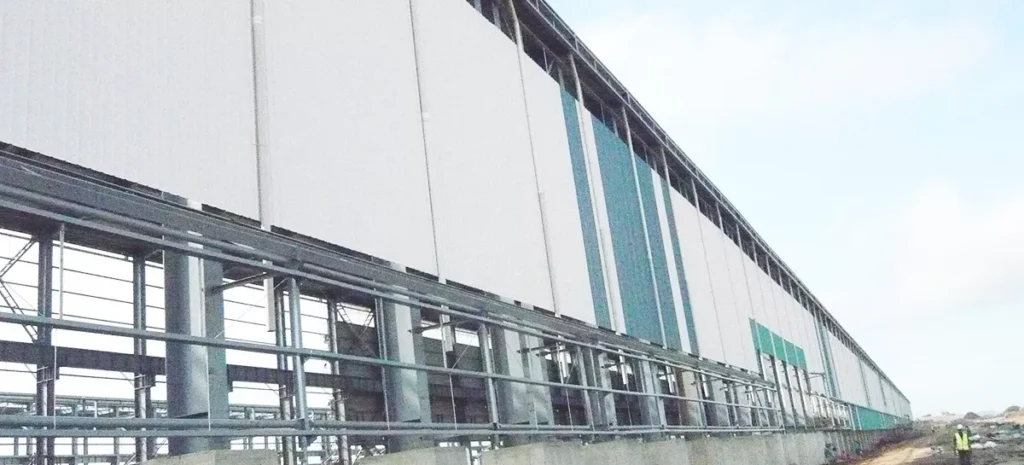
In today’s rapidly evolving global economy, supply chains are becoming increasingly complex, interconnected, and competitive. Companies are looking for ways to streamline operations, reduce costs, and improve the efficiency of their supply chains. One key element that plays a critical role in enhancing supply chain performance is the warehouse. As global trade grows and logistics become more sophisticated, the demand for high-performance, flexible, and cost-effective storage solutions is rising. Steel structure warehouses are proving to be an essential component in meeting these demands. Their durability, cost-efficiency, and design flexibility make them an ideal choice for companies involved in the global supply chain.
In this article, we’ll explore the crucial role that steel structure warehouses play in the modern global supply chain and why they are increasingly the go-to solution for businesses worldwide.
1. Durability and Reliability for Long-Term Storage
Steel structure warehouses are known for their strength and long-term durability, making them an ideal solution for storing goods across global supply chains. These buildings are designed to withstand extreme weather conditions, natural disasters, and heavy loads, ensuring that they can reliably store a wide range of products.
- Weather and Seismic Resistance: Steel is resistant to corrosion, termites, and fire, and it has high strength-to-weight ratio, making it capable of withstanding severe weather conditions such as hurricanes, snow, and high winds. This is especially important in regions with extreme weather, as it ensures the warehouse remains operational year-round without compromising safety.
- Adaptability to Storage Needs: Steel structures offer flexibility in design, enabling businesses to easily expand, reconfigure, or adapt their warehouses to accommodate changing inventory needs. This adaptability is essential for businesses that need to respond quickly to changes in demand and inventory flow, common in the fast-paced global supply chain environment.
Example: A steel structure warehouse located in a coastal region prone to hurricanes can be built with reinforced steel columns and a high-strength roof design, ensuring that inventory remains secure even during extreme weather events.
2. Cost-Effectiveness and Quick Construction
The cost of constructing and maintaining warehouses is a significant consideration for companies operating in the global supply chain. Steel structure warehouses are often more cost-effective than traditional brick-and-mortar buildings, offering a lower upfront investment and reduced long-term maintenance costs.
- Lower Initial Construction Costs: Steel is a lightweight material that is easy to manufacture, transport, and assemble, which reduces construction time and labor costs. Steel structures can be built faster than conventional buildings, allowing businesses to set up new warehouses quickly in response to changing supply chain needs.
- Lower Maintenance Costs: Steel is highly resistant to wear and tear, reducing the need for ongoing maintenance and repairs. Unlike wood or concrete, steel does not rot, warp, or crack over time, which means fewer repair expenses and less downtime for the warehouse.
Example: A company looking to expand its operations into a new region can build a steel structure warehouse within months, significantly reducing the time required to bring new products into the market compared to traditional construction methods.
3. Flexibility in Design and Customization
A key advantage of steel structure warehouses is their design flexibility, which allows businesses to customize the space based on specific operational requirements. The ability to create large, open spaces with minimal internal columns or supports enables companies to optimize the layout for storage, workflow, and inventory management.
- Wide Spans for Storage Efficiency: Steel allows for the creation of wide-open floor plans that maximize the storage area without the need for internal support columns. This flexibility is particularly important in warehouses handling large quantities of goods or bulky items that require expansive storage.
- Modular and Expandable Designs: Steel structure warehouses can be easily modified or expanded as business needs grow. This scalability makes them ideal for companies in global supply chains that need to adjust their storage capacity based on changing product volumes and seasonal demand.
Example: A global retailer that experiences fluctuating demand for products across different regions can design a steel structure warehouse with modular sections that can be added or removed based on seasonal requirements, allowing for efficient space utilization.
4. Improved Supply Chain Efficiency and Logistics
In the context of the global supply chain, warehouses serve as critical hubs for storing, sorting, and distributing goods. The efficient operation of these hubs is crucial to maintaining fast and accurate inventory management, as well as meeting customer demands on time. Steel structure warehouses are designed to optimize these functions.
- Efficient Use of Space: Steel buildings can accommodate a range of storage systems such as pallet racks, shelving units, and automated retrieval systems, which improve inventory management and streamline logistics operations. This means businesses can store more products in less space, reducing overhead costs.
- Automation and Technology Integration: Steel structure warehouses can easily incorporate automated systems for inventory tracking, order fulfillment, and material handling. With the rise of technologies like robots, drones, and automated guided vehicles (AGVs), these warehouses are evolving into highly efficient hubs for moving goods through the supply chain with minimal human intervention.
- Enhanced Flow of Goods: Steel structure warehouses can be designed with efficient loading docks, wide aisles, and multiple entry points, which improve the flow of goods in and out of the warehouse. This is especially beneficial for companies that rely on quick turnaround times to meet customer demands and ensure on-time delivery.
Example: A steel structure warehouse in a major port city can use advanced automation technology to sort and dispatch goods quickly, ensuring a steady flow of inventory through the global supply chain and minimizing delays.
5. Sustainability and Environmental Considerations
Sustainability is increasingly important in global supply chains, as companies are under pressure to reduce their environmental footprint and comply with green building regulations. Steel structures offer several advantages in terms of sustainability.
- Energy-Efficient Design: Steel structures can be designed with energy-efficient insulation, lighting systems, and HVAC systems that reduce energy consumption. Solar panels can also be integrated into the roof design to harness renewable energy, lowering operational costs and reducing reliance on non-renewable resources.
- Recyclability: Steel is a highly recyclable material, which contributes to a circular economy by reducing waste and promoting sustainability in construction. Steel components can be reused or recycled at the end of their lifespan, which helps reduce the environmental impact of building materials.
- LEED Certification: Many steel structure warehouses are designed to meet LEED (Leadership in Energy and Environmental Design) standards, which further demonstrate a commitment to sustainability and environmental responsibility. LEED-certified buildings can result in tax incentives, lower energy bills, and improved brand reputation.
Example: A steel structure warehouse built with energy-efficient insulation and solar panels can reduce the building’s carbon footprint, helping the company meet its sustainability goals while also saving on energy costs.
6. Global Adaptability and Scalability
Steel structure warehouses are not only designed for specific geographical regions but are also highly adaptable to different climates, building codes, and regulatory requirements. This global adaptability is a significant benefit for multinational companies with supply chains that span multiple countries and regions.
- Customizable for Local Needs: Steel warehouses can be tailored to meet the specific demands of different locations, whether that involves designing for extreme cold climates, ensuring compliance with local building codes, or integrating features to accommodate region-specific logistical needs.
- Scalability for Global Expansion: As global supply chains expand, businesses need warehouses that can grow with them. Steel structures can be easily scaled up to accommodate increasing volumes of goods, whether by adding more storage space or enhancing internal systems to improve efficiency.
Example: A multinational e-commerce company can build steel structure warehouses in various regions worldwide, with each warehouse customized for local conditions, ensuring consistency in operations across different countries.
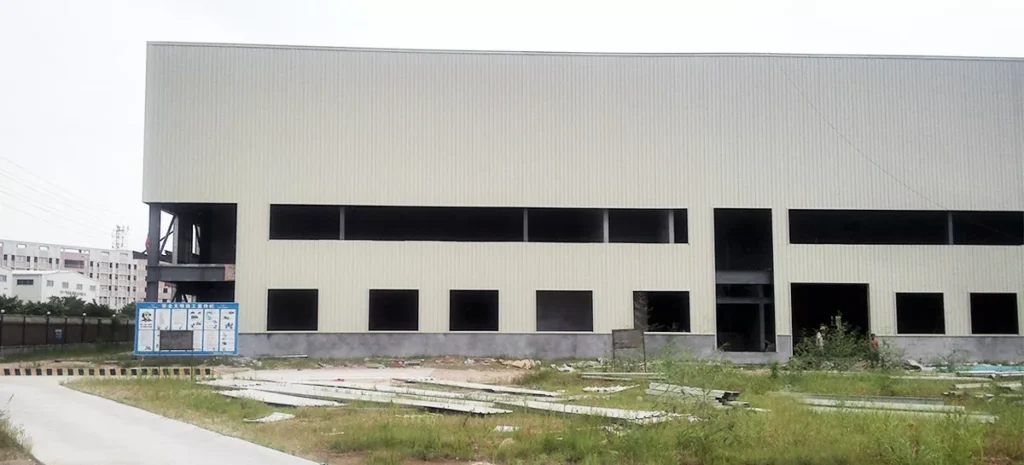
Conclusion
Steel structure warehouses play an integral role in optimizing the efficiency, cost-effectiveness, and scalability of the global supply chain. Their strength, durability, and design flexibility make them an ideal choice for businesses looking to streamline storage, enhance logistics operations, and adapt to the demands of a fast-paced, global marketplace.
Whether you’re a manufacturer, distributor, or retailer, investing in a steel structure warehouse can improve operational efficiency, reduce construction and maintenance costs, and ensure that your business is well-positioned to meet the ever-changing needs of the global supply chain.
At Ganyo Steel Structure, we specialize in designing and constructing high-quality steel structure warehouses that meet the specific needs of businesses worldwide. If you’re looking to optimize your supply chain operations and improve warehouse efficiency, contact us at lizzy@ganyosteelbuilding.com to learn more about how we can help you build the perfect storage solution for your business.

